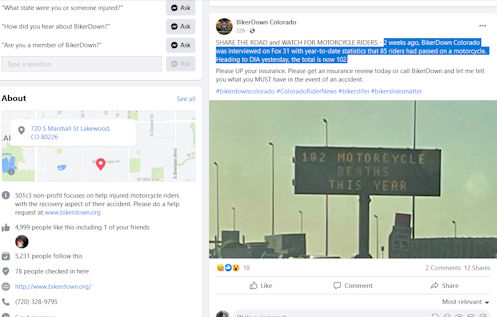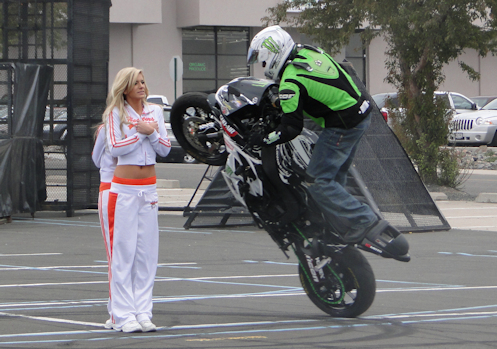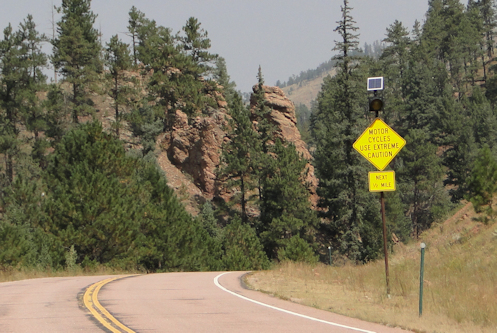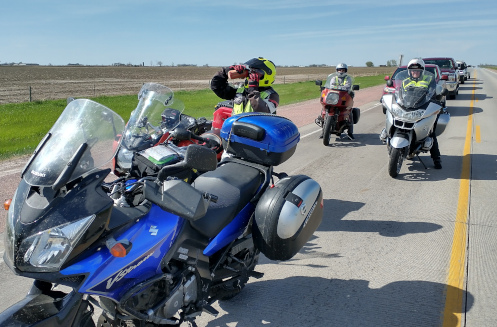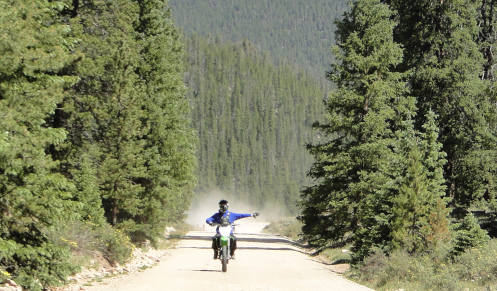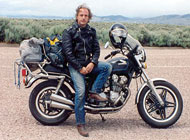To Ride Your Own Ride
Monday, October 31st, 2022I went recently with the RMMRC on a fall color ride and Ralf was the leader and organizer. I know Ralf and I’ve ridden with Ralf. And I know Ralf is very much a go-fast kind of guy.
Sure enough, we hadn’t gone all that far and the folks ahead of me were moving at a clip I just was not all that comfortable with. I can ride fast when I choose to but frequently I just don’t choose to. So I just went my own pace and that was fine. Ralf had been very clear that he would not turn off the road we were on without waiting for everyone to catch up so no one would get lost.
One of the folks ahead of me, though, was Maynard. Maynard kept up with Ralf but when we stopped for a couple minutes in Conifer he spoke up, saying that he felt the pace to that point had been a bit excessive. Good for you Maynard, it’s good to speak up and let your opinion be known. Ralf replied that he didn’t feel the pace had been all that fast but he asked how the rest of us felt. I spoke up and said I agreed with Maynard but that I knew beforehand that Ralf was fast and I had just made up my mind to ride my own ride, and if I got behind, I was OK with that.
I will note, however, that there was one particular curve where I went into it too hot and did some emergency hard braking. And I wasn’t even trying to keep up.
No one else said they thought the pace had been all that excessive, although of course some of them had been behind me.
The consensus was as I had suggested, that everyone should just ride their own ride, and we went on. Ralf gave no indication he felt he ought to slow down, and he reiterated that he would not let anyone get separated at a turn. Whether it was for this reason or just because he often does this (he does, and he may have planned this from the start), Maynard peeled off from the ride a bit later when we got to Evergreen and headed off on his own.
But this is a real issue, and it’s one everyone needs to think out on their own. Some people just like to ride faster than others. If a group you ride with always goes faster than you like, then maybe you need to find another group. Alternatively, you could take the role of leader and then lead at the pace you feel comfortable with.
I’m personally not a go-fast guy, to the point that on the recent OFMC trip Bruce asked at one point why we so frequently would ride at five miles below the limit. We just like to take our time and enjoy the ride. Bruce said he had never ridden with a group that didn’t generally go as fast as they could. Or at least go the speed limit.
However, there are several people in the RMMRC who lead a lot of the rides who are go-fast guys. If you go on many rides with this group you are going to find yourself in this situation. And I have. Many times. And I just ride my own ride. If someone wants to go faster they can go around me and catch up with the group ahead.
No one should out-ride their own abilities. Safety is more important than conforming with the group. If you’re not comfortable, slow down. The life you save may be your own.
Biker Quote for Today
So today I went on a motorcycle ride and I forgot to post a picture on Instagram about it. Then I remembered I was too busy riding my motorcycle.

